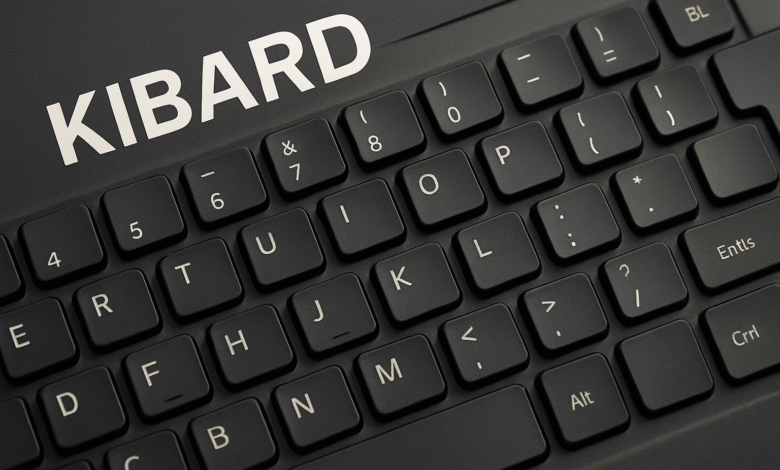Kibard: Understanding the Misspelling of Keyboard and Its Role in Digital Communication

In the digital age, one of the most essential tools we use every day is the keyboard. Whether we are working, gaming, writing, or simply chatting online, the keyboard serves as a bridge between humans and machines. However, a common typing mistake that often appears is the word “kibard.” This misspelling of “keyboard” has become surprisingly frequent, mainly due to pronunciation similarities and typing errors. Understanding why kibard occurs and what the keyboard truly represents helps us appreciate this device’s importance in our digital interactions.
The Confusion Between Kibard and Keyboard
The term kibard is not an official word; it’s a misspelling of keyboard. This mix-up happens for several reasons. One of the most common causes is phonetic similarity—both words sound nearly identical when spoken quickly. Voice-to-text software and autocorrect systems sometimes misinterpret “keyboard” as “kibard,” especially if the pronunciation is unclear. In other cases, fast typists may accidentally switch letters when typing in a hurry.
Despite being a misspelling, kibard refers to the same thing—a typing device used for inputting data into a computer or electronic system. Understanding this error helps us see how language and technology interact, especially when digital communication heavily relies on text.
What Is a Keyboard (Kibard)?
A keyboard, or kibard as some mistakenly type, is an input device that allows users to communicate with their computers or other electronic gadgets. It consists of keys representing letters, numbers, symbols, and commands. When a user presses a key, it sends a signal to the computer to perform a specific function. This makes the keyboard one of the most vital tools in the digital ecosystem.
From desktops and laptops to smartphones and tablets, every modern device features some form of keyboard. Even touch-screen devices offer virtual keyboards, making text entry possible anywhere, anytime.
The Evolution of the Keyboard
The journey of the keyboard—or kibard—is rooted in history. It began with the invention of the typewriter in the 19th century. Typewriters introduced the mechanical key system, and their layout later inspired the modern QWERTY arrangement. The QWERTY design was created to prevent typewriter keys from jamming, and it remains the most widely used layout today.
In the 1980s and 1990s, with the rise of personal computers, the keyboard became more sophisticated. Early versions were bulky and mechanical, producing loud clicks. Over time, quieter and more responsive versions were introduced, such as membrane and mechanical keyboards. Today, we have ergonomic, wireless, and even gaming keyboards with advanced features that enhance performance and comfort.
Types of Keyboards
Just like the different ways people might mistakenly write kibard, there are many variations of the keyboard designed for different needs. Here are some popular types:
-
Mechanical Keyboards – Known for their tactile feel and durability. Each key has its own mechanical switch, providing a satisfying typing experience.
-
Membrane Keyboards – These use a pressure pad system. They’re quieter and cheaper but less tactile than mechanical ones.
-
Ergonomic Keyboards – Designed to reduce wrist strain and promote comfort during long typing sessions.
-
Wireless Keyboards – Use Bluetooth or other wireless connections to eliminate clutter and improve flexibility.
-
Gaming Keyboards – Built for performance with backlighting, macro keys, and high responsiveness.
-
Virtual Keyboards – Displayed on touchscreens, perfect for smartphones and tablets.
Each type serves a specific purpose, ensuring users can choose the best fit for their needs—whether for work, education, or entertainment.
Keyboard Layouts Around the World
While the QWERTY layout dominates in most English-speaking countries, other regions have different arrangements:
-
AZERTY Layout: Common in France and Belgium, designed for French typing efficiency.
-
QWERTZ Layout: Used in Germany and Central Europe, switching “Y” and “Z.”
-
Dvorak Layout: Created for speed and comfort, placing frequently used letters on the home row.
Even if people mistakenly type kibard, these global variations show how universal and adaptable the concept of the keyboard truly is.
The Role of the Keyboard in Everyday Life
The keyboard—or kibard—is more than just a tool; it’s a core part of how we live and work digitally. Here’s how it shapes our daily activities:
-
Productivity: In offices, keyboards are crucial for writing reports, sending emails, and managing data.
-
Communication: From texting friends to crafting business proposals, the keyboard remains the foundation of digital conversation.
-
Entertainment: Gamers rely on responsive keyboards for precise control during gameplay.
-
Education: Students use keyboards for assignments, research, and online learning.
-
Creativity: Writers, designers, and content creators use keyboards to bring ideas to life.
Without this device, much of our digital interaction would come to a halt.
The Future of Keyboards
Technology continues to evolve, and so does the keyboard. With innovations like voice-to-text, gesture control, and wearable tech, some might think the traditional keyboard will fade away. However, it continues to adapt rather than disappear. Future kibard designs may include flexible materials, touch-sensitive fabrics, or even projection-based systems that allow typing on any surface.
Despite all advancements, the classic keyboard remains unmatched in accuracy, control, and familiarity. It’s likely that even in futuristic setups, some version of the kibard will still exist as our go-to interface for text input.
Why Understanding “Kibard” Matters
Knowing that kibard is a misspelling of keyboard might seem trivial, but it highlights the importance of precision in communication. In online searches, using the wrong term can lead to irrelevant results. For instance, someone searching “buy kibard online” might not find the best keyboards available. Being aware of such common typing mistakes helps users get better results and improves digital literacy.
Moreover, this small error reflects how closely language and technology are intertwined. As our communication becomes increasingly digital, even simple words like “keyboard” play a huge role in connecting humans and machines.
FAQs
1. What does the word Kibard mean?
Kibard is a common misspelling of the word “keyboard,” often caused by pronunciation similarities or typing errors.
2. Is Kibard a real term?
No, kibard is not an official English word. It refers to the same device as a keyboard and is simply a mistaken form.
3. Why do people write Kibard instead of Keyboard?
People may type kibard accidentally or due to autocorrect and speech recognition software mishearing the word.
4. Does typing Kibard affect search results?
Yes. Searching for kibard might bring up incorrect or unrelated results, making it important to use the correct spelling—keyboard.
5. How can I avoid typing Kibard?
Proofread your writing and enable spell-check or autocorrect features to catch such errors before sending or publishing your text.
Conclusion
In summary, kibard is simply a mistaken version of keyboard, but the device it refers to is one of the most vital components of our digital world. From the earliest typewriters to today’s wireless and virtual keyboards, this tool has revolutionized how we communicate, create, and connect. Understanding both the error and the essence behind kibard reminds us of the deep relationship between humans and technology—a relationship built, quite literally, on the keys of a keyboard.
Read also:Schedow: The Ultimate Guide to Mastering Time and Digital Presence


